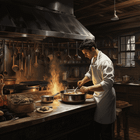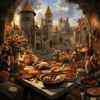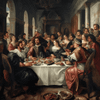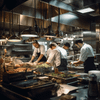Culinary Arts: A Historical Perspective
The culinary arts have a rich and fascinating history that spans centuries and cultures. From primitive cooking methods to elaborate gourmet cuisine, the evolution of culinary arts has shaped the way we eat and enjoy food. Join us on a journey through time as we explore the origins and development of culinary arts.
Ancient Beginnings
The history of culinary arts can be traced back to the earliest civilizations. Ancient cultures like the Mesopotamians, Egyptians, and Greeks laid the foundation for modern cooking techniques. These early societies developed cooking utensils, fermented beverages, and basic recipes that still influence our culinary practices today.
Culinary Traditions in the Middle Ages
The Middle Ages witnessed a significant shift in culinary arts. Feasting and elaborate banquets became symbols of power and wealth among the aristocracy. Royal kitchens and professional chefs emerged to create intricate dishes for the nobility. During this time, culinary techniques such as roasting, boiling, and seasoning with spices grew in popularity.
Renaissance: The Birth of Modern Cuisine
The Renaissance period marked a reawakening of culinary arts. The exploration of new territories, such as the Americas, brought an influx of exotic ingredients to Europe. This period saw the emergence of cookbooks and the development of culinary innovations, such as sauces and pastries. Artists, like Leonardo da Vinci, even depicted banquets in their paintings.
Modern Culinary Arts
In the modern era, culinary arts have become a respected profession with its own schools and certifications. Chefs are now seen as artists and innovators, constantly pushing the boundaries of taste and presentation. Cookbooks, cooking shows, and food blogs have made culinary knowledge more accessible to home cooks. Additionally, the rise of food tourism has led to a greater appreciation of diverse culinary traditions from around the world.




















